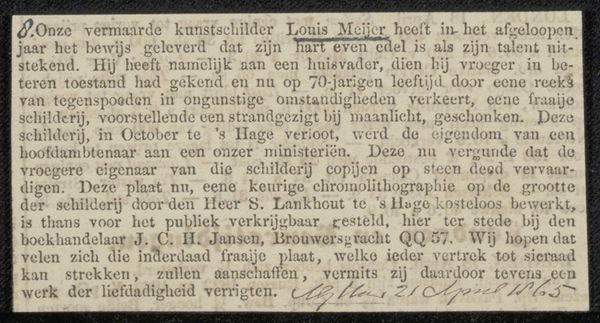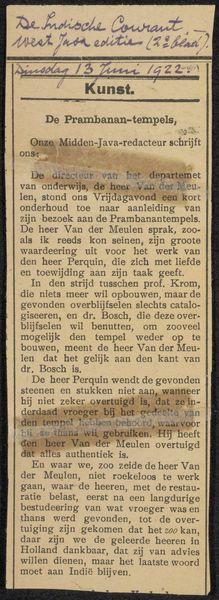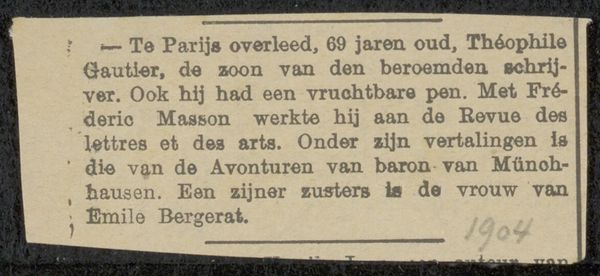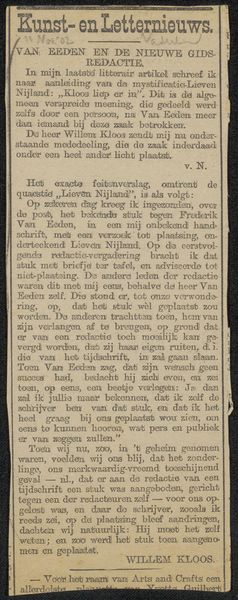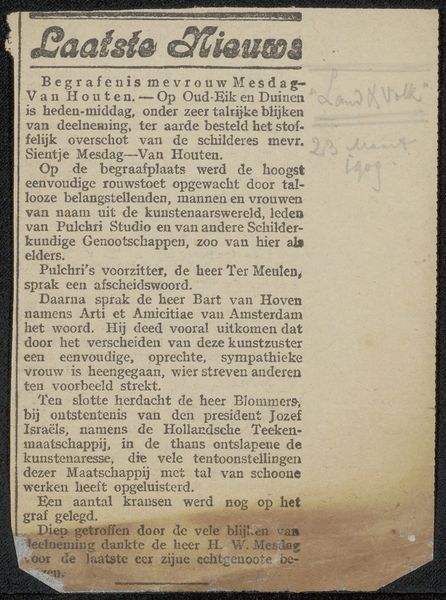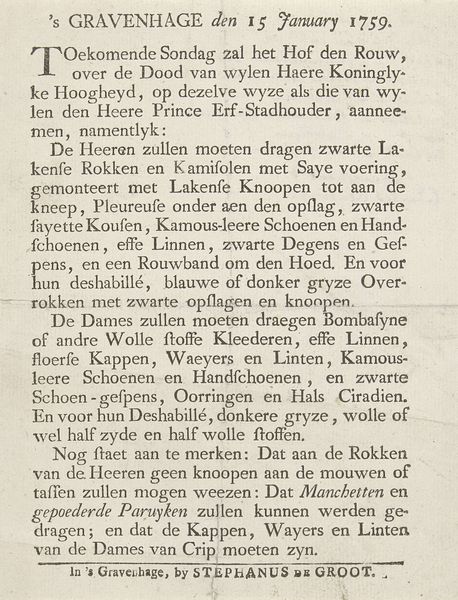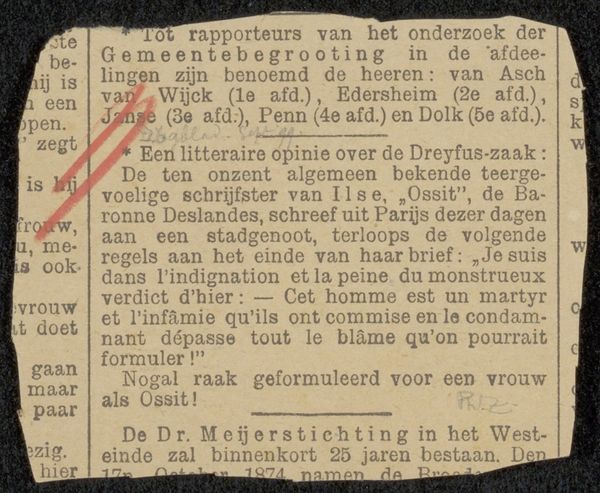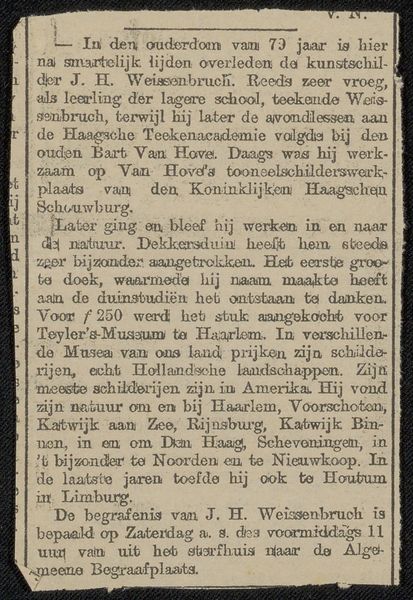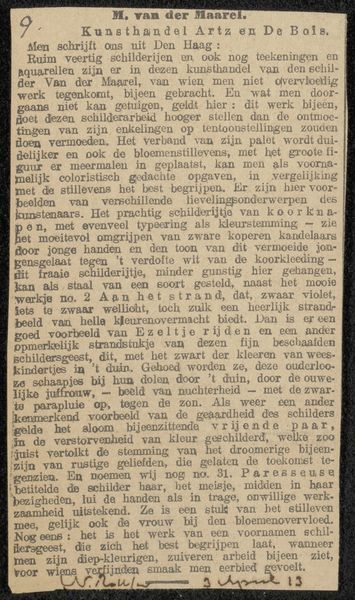
print, photography
#
script typography
#
hand-lettering
# print
#
hand drawn type
#
hand lettering
#
photography
#
personal sketchbook
#
hand-written
#
hand-drawn typeface
#
fading type
#
stylized text
#
small lettering
Copyright: Rijks Museum: Open Domain
Curator: This photographic print shows a news clipping, “Krantenknipsel betreffende Louis Meijer,” which translates to “News clipping regarding Louis Meijer.” The clipping probably dates to around 1863, considering the text. Editor: It feels immediate, raw. The uneven edges of the clipping, the fading ink—it gives a strong sense of ephemerality. Like a thought jotted down and then nearly forgotten. Curator: Exactly. News clippings like these, printed for mass consumption, reflect how artists were perceived and consumed by the public. This snippet spotlights Louis Meijer, a celebrated marine painter of his time. The mention of royalty visiting his studio to view his work, commissioned by the King of Württemberg, indicates his prestige and standing. Editor: The image of royalty as art patrons reminds us that power often shapes artistic taste and visibility. The phrase "zeeschilder", marine painter, gives such a sense of a certain kind of artwork, it speaks to themes and settings, a place, a history of seeing and feeling... I want to explore that feeling of waves. Curator: It's a great observation, and highlights a symbiotic relationship. The monarchy provides Meijer patronage and validates the importance of his art, while Meijer’s artistry, depicting grand coastal scenes, enhances the monarchy’s image of wealth and refinement. His subject and his patron work to magnify each other’s symbolic stature. Editor: I love how this small, fading document preserves that moment of royal encounter. Beyond the specific people, though, that script typography and those hand-drawn elements bring another dimension. A fleeting moment crystallized by public interest and immortalized in print. Curator: Precisely. The photograph of the news clipping adds another layer of historical context. The very act of preserving it points to the perceived significance of Meijer’s work within the socio-political framework of his era, reflecting a collective memory and an intentional preservation of legacy. Editor: It makes me realize how much our perception of artistic value is dependent on context and how important it is to investigate it, the social position and what it means. That art is just something “out there,” no! Art is always “in here” as well.
Comments
No comments
Be the first to comment and join the conversation on the ultimate creative platform.


